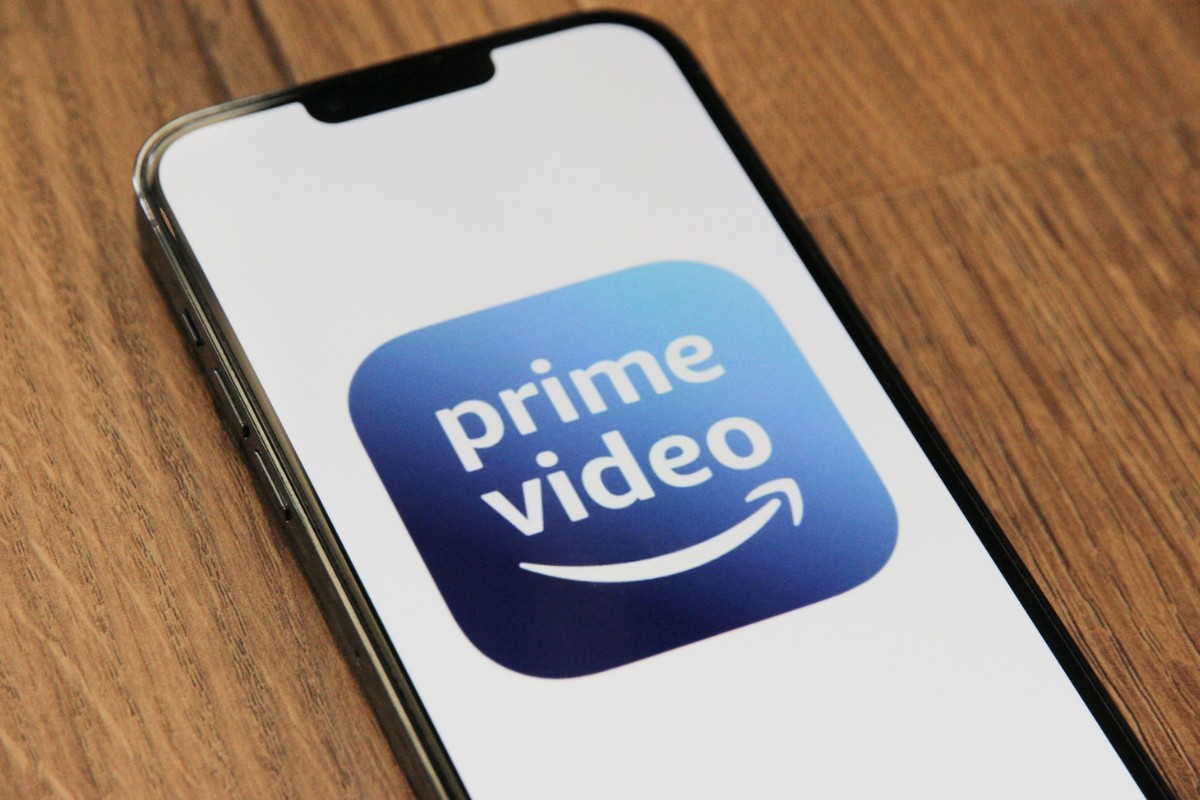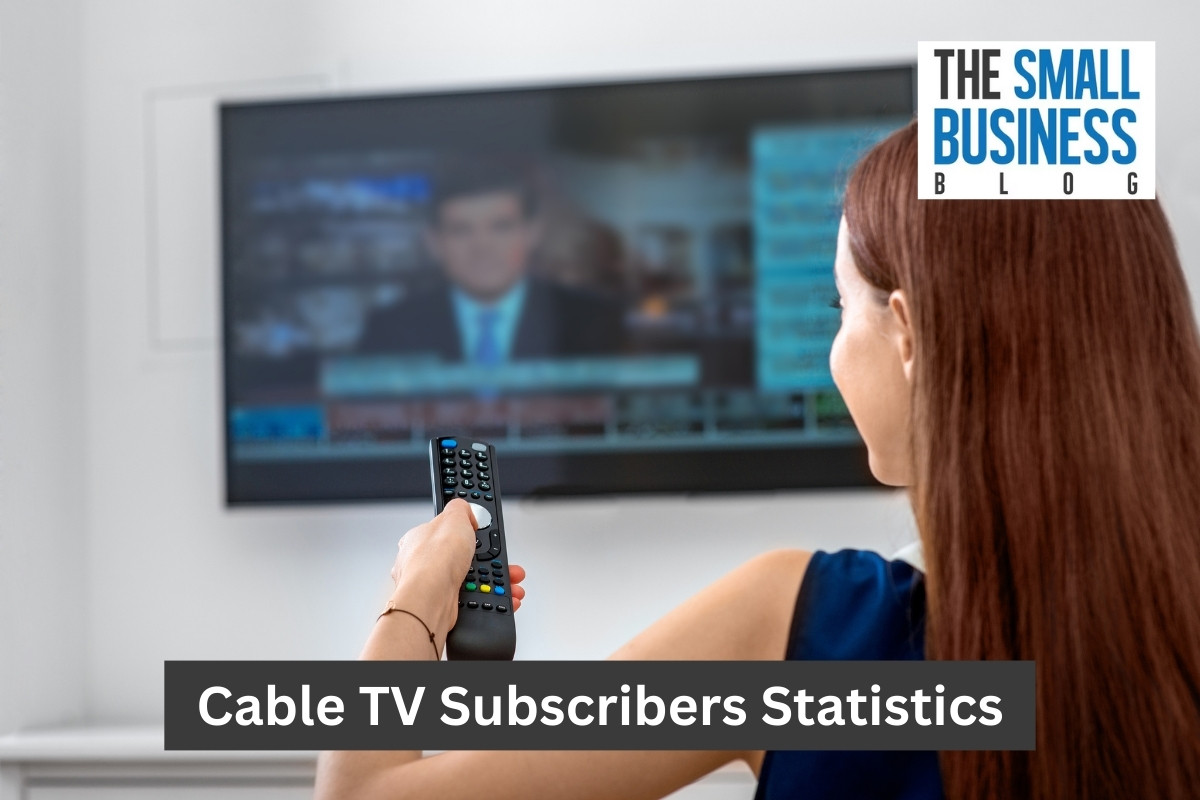As amazing as it may seem, cable TV started in the late 1940s.
Originally, it was developed in the US to provide better reception for commercial broadcast networks.
The system was slowly adopted.
But, by the 1960s it was spreading across many metropolitan parts of the US.
These were areas which often suffered from poor signals thanks to being surrounded by tall buildings.
In many cases, tall buildings created community antennas which were high enough to receive good satellite signals.
These were connected to individual homes via cable.
It should be noted, that cable TV is also the term used for any system which delivers its signals solely through the satellite network.
Of course, today many people are switching to streaming services, gaining access to hundreds of thousands of movies and shows via the internet.
However, that doesn’t mean cable TV is disappearing any time soon.
As the following cable TV subscribers statistics show, it is still an incredibly popular option.
While some subscribers have cut their subscriptions, many have chosen to use a traditional cable TV service alongside their preferred streaming service.
After all, it’s better to have a wide array of watching options than to be stuck with just a few channels.
Let’s take a look at the statistics.
Post Contents
- 1 Key Statistics
- 2 Top Cable TV Subscribers Statistics in 2024
- 2.1 1. 90% Of The US Population Can Access Cable TV
- 2.2 2. 28% Of TV Time Is Spent On Traditional TV
- 2.3 3. Comcast Has Over 16 Million Subscribers
- 2.4 4. 48% Of Americans Have A Cable Subscription
- 2.5 5. NBC Had 5.1 Million Viewers In 2022
- 2.6 6. Amazon Prime Is The Most Popular Streaming Service
- 2.7 7. Fox Saw A 7% Revenue Growth In 2022
- 2.8 8. Over 100 Million People Will Cut The Cord in 2024
- 2.9 9. 81% Of Over 65s Have A Cable TV Subscription
- 2.10 10. 66% Of Cable Subscribers Feel They Should Get More For Their Money
- 2.11 11. By The End Of 2023 There Will Be 78 Million Pay TV Subscriptions In Europe
- 2.12 12. China Has More Cable TV Subscribers Than Any Other Country
- 2.13 13. Latin America Is A Growing Market For Cable TV
- 2.14 14. Sky Europe Has Over 14 Million Cable Subscribers
- 2.15 15. Adults Rely More Heavily On Cable Than Streaming
- 2.16 16. The Average Cable TV Packages Costs between $114 And $217 A Month
- 2.17 17. Sports Viewing Is Still More Common On Cable
- 3 Summing Up
Key Statistics
- 90% of the US population can access cable TV
- 28% of TV time is spent on traditional TV
- Comcast has over 16 million subscribers
- 48% of Americans have a cable subscription
- NBC had 5.1 million viewers in 2022
- Amazon Prime is the most popular streaming service
- Fox saw a 7% revenue growth in 2022
- Over 100 million people will cut the cord in 2024
- 81% of over 65s have a cable TV subscription
- 66% of cable subscribers feel they should get more for their money
- By the end of 2023 there will be 78 million pay TV subscriptions in Europe
- China has more cable tv subscribers than any other country
- Latin America is a growing market for cable TV
- Sky Europe has over 14 million cable subscribers
- Adults rely more heavily on cable than streaming
- The average cable TV packages costs between $114 and $217 a month
- Sports viewing is still more common on cable
Top Cable TV Subscribers Statistics in 2024

1. 90% Of The US Population Can Access Cable TV
Cable TV has been in existence for over 75 years and yet, despite this, there are still some people in the US that can’t access it!
According to the latest survey, there are 5,200 cable systems which are run by 660 different operators.
Together they have a total of 1,775 television stations and the cable system can reach 90% of the US population.
Of course, that doesn’t mean 90% of the population have cable TV, have ever had it, or will continue to have it.
For many, the array of options currently available means it’s easy to believe the grass is greener elsewhere. The only question is whether it really is or not.
(Federal Communications Commission)
2. 28% Of TV Time Is Spent On Traditional TV
Traditional TV, that’s the commercial broadcast channels, has always faced a content challenge.
The medium has a relatively small number of channels and is trying to create content which appeals to everyone.
Unfortunately, this has often resulted in a selection of channels playing unusual viewing options.
Streaming services can offer a much bigger variety of programs to watch, without needing to create traditional channels and niches.
In short, as most US adults agree, streaming services are much more entertaining because you can always find something enjoyable to watch.
This has resulted in a gradual shift toward streaming services.
The latest survey found that 68% of people’s watching time is spent using streaming services, and just 28% is spent on cable TV.
The amount of time spent watching traditional TV is likely to decline further as streaming video channels, such as YouTube become increasingly popular.
(Forbes)
3. Comcast Has Over 16 Million Subscribers
Comcast is an example of why the Cable TV industry is concerned, especially in the US.
It has steadily lost subscribers in the last few years.
In fact, Comcast has lost nearly 4 million subscribers in the last two years.
At the end of 2022, they had just 16.1 million subscribers.
Just one year before that figure was 2.1 million higher, with 18.2 million subscribers.
It’s roughly an 11% decrease in subscribers.
The year before the company had 19.8 million, illustrating just how bad it is starting to get for cable TV in the US.
Unfortunately, this trend is likely to continue.
In 2022 there were approximately 68.5 million households listed as subscribing to pay TV.
It’s expected this number will reduce each year.
Predictions suggest it will be 57.2 million by 2026, that’s a decrease of nearly 5%.
Experts predict that 2024 will see the first year there are equal numbers of pay TV subscribers compared to non-paying TV households.
From 2025 onward, the pendulum will swing in favor of non-payers.
(Media Play News)
4. 48% Of Americans Have A Cable Subscription
The initial statistics paint a dire picture for cable TV subscribers.
It would seem it’s only a matter of time before cable TV is no more.
However, that’s not the entire story yet.
The latest study by Pew Research has found that 48% of Americans are still receiving TV via their cable or satellite link.
That doesn’t mean these households are using cable exclusively.
However, it does illustrate that nearly half of all Americans are not yet ready to give up on traditional TV.
Cable TV isn’t dying yet.
However, the producers and executives in these companies need to think carefully about the content they produce if they want to stay in business.
Some companies are already embracing the change.
For example, WETA 26 operates in the Greater Washington area and has a good selection of primetime television programs.
It also runs WETA UK, providing Americans with an excellent array of British shows.
WETA Kids keeps the children amused and will make it harder for the household to step away from traditional TV.
(Pew Research)
5. NBC Had 5.1 Million Viewers In 2022
NBC is one of the best-known US channels.
There’s a good reason for this, it has the most viewers compared to its competition.
In 2022 NBC was recorded as having 5.1 million viewers.
It’s not a significant part of the population as there are over 330 million people in the US.
However, it is the most-watched channel in the US, and a channel that will need to be monitored to see how it progresses.
(Variety)
6. Amazon Prime Is The Most Popular Streaming Service

Streaming services offer a huge array of programs and movies.
Some are the same as those that can be watched on traditional television, others are unique to the streamlining service.
In all cases, it’s more pleasurable to watch via a streaming service.
You can start whenever you want, stop the program/movie for any reason, and restart in exactly the same place.
The service is excellent and effortless.
That’s why there has been a steady increase in Amazon subscriber numbers.
Today, there are approximately 112 million Amazon subscribers in the US alone.
The second spot goes to Netflix with 73.94 Million subscribers.
Other streaming services don’t do as well as the top two.
However, they do illustrate why cable subscriptions are struggling.
To put this in perspective, Hulu has 55 million subscribers, Disney Plus manages 40 million, and HBO has an impressive 17.1 million.
Cable TV is struggling to reach any of these numbers.
(Business of Apps)
7. Fox Saw A 7% Revenue Growth In 2022
Fox News has enjoyed a surge in ratings in recent years.
This is likely to be connected to their extensive coverage of Donald Trump and his antics.
This coverage and an improved pricing structure have seen an increase in revenue for the channel.
In fact, in the last three months of 2022, the company took just over one billion dollars.
That’s a 7% growth in revenues and something the company should be proud of.
Pricing and ratings clearly helped.
However, affiliate fee revenues also increased, by a healthy 4%.
This meant they reached $1.72 billion for the year.
The TV segment of the business witnessed a 4% growth in revenue from advertising and the cable network programming section saw an impressive 14% increase.
Fox’s total annual revenue increased by 5%, taking the revenue for the year to just over $3 billion.
(Fierce Video)
8. Over 100 Million People Will Cut The Cord in 2024
Cutting the cord refers to people eliminating their cable subscriptions.
While some people simply stop using cable TV, others have the sense to cancel the subscription.
This tells the company and the industry how bad the situation is and can encourage them to do more to preserve existing customers.
Of course, many of those cutting the cord have not watched any cable TV for a long time, making it a logical and not an emotional decision.
Current estimates predict that 101 million people will have cut the cord by the end of 2024.
That’s 37.9% of the US population.
In 2022 there were just 87 million cord cutters.
By 2026 experts suggest there will be 113 million, approximately 42% of the population.
There is no guarantee that will end cable TV.
However, it shows there is a clear trend away from cable and toward streaming.
(Reuters)
9. 81% Of Over 65s Have A Cable TV Subscription
It’s not surprising that the older age group has remained loyal to cable subscriptions.
Generally speaking, the older generation is slower to adopt any type of change.
That’s why, according to the latest research, 81% of US citizens aged over 65 have still got a cable TV subscription and have no intention of giving it up.
It’s worth noting that 63% of cable TV subscribers are aged 68 or older.
Roughly 16% of subscribers are aged between 47-67, and 12% are aged between 37-48.
That leaves just 9% of subscribers as aged 36 or under – a sign of how the younger generation is seizing new technology while older generations are sticking to the techniques they already know.
It will be interesting to monitor these figures over the next few years as the number of older people continues to grow.
(Truelist)
10. 66% Of Cable Subscribers Feel They Should Get More For Their Money

A recent survey by Variety looked at customer satisfaction levels.
The survey looked at cable TV subscribers and streaming customers.
Unsurprisingly, thanks to the wide array of choices, it found streaming customers were 95% satisfied with the service.
Their main complaints revolved around downtime and customer support.
That’s despite the average American spending $54 on streaming services.
It is worth noting that only 9% of Streaming subscribers are intending to alter their subscription by adding additional services.
Most subscribers are sticking with what they already have.
In contrast, a staggering 66% of cable TV subscribers felt that they didn’t receive adequate value for their money.
Most respondents felt the channel options didn’t provide enough of interest to justify the monthly charge.
Perhaps most telling was the finding that 45% of cable TV subscribers would cancel their subscription immediately but can’t as it is linked to their internet package.
Canceling one would eliminate the other.
(Variety)
11. By The End Of 2023 There Will Be 78 Million Pay TV Subscriptions In Europe
In an interesting contrast to the gradual decline of cable TV subscriptions in the UK, Europe appears to be moving in the opposite direction.
Current predictions suggest there will be approximately 78 million pay TV subscribers by the end of 2023.
In 2010 there were 25.5 million subscribers.
The market has been growing steadily for years and this growth doesn’t appear to be slowing.
While it’s hard to determine exactly why this is the case, it may be that streaming services aren’t yet supporting enough languages.
For many countries in Europe it’s possible to get a streaming service such as Netflix, but not necessarily in your own language.
Netflix currently operates in 190 countries but is only available in 20 languages.
Until streaming services address this, local cable TV subscriptions are likely to continue to flourish.
(Statista)
12. China Has More Cable TV Subscribers Than Any Other Country
China has approximately 1.425 billion inhabitants.
The only other country close to this number is India, with 1.4 billion.
To put this in context, the entire European Union has just 447 million people, the US has 330 million, and Russia has just 145 million.
The smallest country in the world is Vatican City <with just 800 inhabitants.
China has 342 million cable TV subscribers.
That’s more subscribers than the number of people living in most countries.
India has the second largest number with 112 million cable TV subscribers.
(Cable Compare)
13. Latin America Is A Growing Market For Cable TV
Latin America has become a surprising success story for cable TV.
According to the latest figures, the industry is set to take revenue of $18 billion in Latin America, by 2024.
This will make it one of the largest regions in the world for cable TV consumption.
It’s worth noting that the 2024 figure will still be slightly lower than the industry peak in 2017.
The reasons for the decline and regrowth of the industry are unclear.
What does appear certain is that this industry growth is likely to continue for several years, making it an important investment market for Cable TV providers.
The 2024 value of nearly $18 billion is significantly more than the $15 billion the industry was worth in 2023.
Revenue levels have climbed by roughly a billion since 2020, if predictions are correct they will leap in the coming year.
(Statista)
14. Sky Europe Has Over 14 Million Cable Subscribers
Sky Europe is the perfect example of how the industry is surging in Europe while declining in the US.
In 2014, Sky Europe had approximately 10 million subscribers.
This represented a steady increase on previous years.
However, in 2022, Sky Europe announced it had reached 14 million subscribers, which is an impressive 40% increase from the 2014 number.
Sky Europe hasn’t provided any explanation as to why this increase is occurring.
However, they are expecting to pick up an additional one million subscribers by the end of 2023.
Should this trend continue, Sky Europe could have over 17 million Cable TV subscribers by 2025.
That’s not bad for an industry which is supposedly in decline.
(Statista)
15. Adults Rely More Heavily On Cable Than Streaming
This is a surprising statistic as it seems logical that the adults, being the bill payers, would be the driving force in the switch to streaming services.
A streaming platform can be stopped and started at will and you can order virtually anything via it.
Cable TV is more restrictive, making it less user-friendly.
However, the latest statistics show that only 25% of US adults have subscribed to a streaming service.
In contrast, 65% have subscribed to cable TV.
This difference is even more pronounced in older generations.
Only 16% of people aged over 65 have subscribed to a streaming service.
75% of people over 65 have subscribed to cable.
Of course, this trend may simply be a resistance to change.
That’s a common trait in older people.
(Statista)
16. The Average Cable TV Packages Costs between $114 And $217 A Month
Cable TV has a reputation for being more expensive than streaming services.
It’s also generally more constrained.
You are unlikely to find a cable subscription which doesn’t require you to sign up for a year or more.
In contrast, streaming services allow you to pay monthly and start/stop your subscription at any time.
The exact price of cable TV in the US varies depending on which state you live in and how many additional services you want.
In most cases internet is included in the package, to make the deal more enticing.
Whichever way- you look at it, cable TV is a significant monthly cost.
In fact, 69% of those surveyed admitted they didn’t choose cable TV simply because of the cost.
To appreciate the difference, a survey by J.D. Power found that the average viewer pays $47 a month for streaming services.
That’s considerably cheaper than cable TV.
(Doxo/Allconnect)
17. Sports Viewing Is Still More Common On Cable

One thing that cable TV still has going for it is that it’s still the predominant place to find live sports.
These contracts aren’t likely to change in the near future, although the medium to long-term future could be a different story.
In January 2023 sports viewing on cable TV actually increased by 22%.
Statistics also show an increase in expenditure on cable during peak sporting moments, such as the World Cup and the Olympics.
It’s likely that the sports viewers are existing cable customers making the most of what they have.
But, it’s still a reason to believe that cable TV may still have a future.
(Nielsen)
Summing Up
The most up-to-date cable TV subscribers statistics illustrate an industry that is struggling to survive.
Streaming is generally agreed to be a more convenient and user-friendly solution.
However, cable TV isn’t dead yet.
For various reasons, it still has a huge following in China and India, and growing markets across Europe.
Only time will tell if these trends will continue.
While the long-term forecast is likely to end with the extinction of cable subscriptions, this isn’t likely to happen for many years.
That means, the industry still has time to evolve and formulate new ways to deliver a premium service.
With the right form of reinvention, cable TV still has the potential to upset streaming providers.
But it’s a longshot, especially in the United States where the industry is already in decline.






























